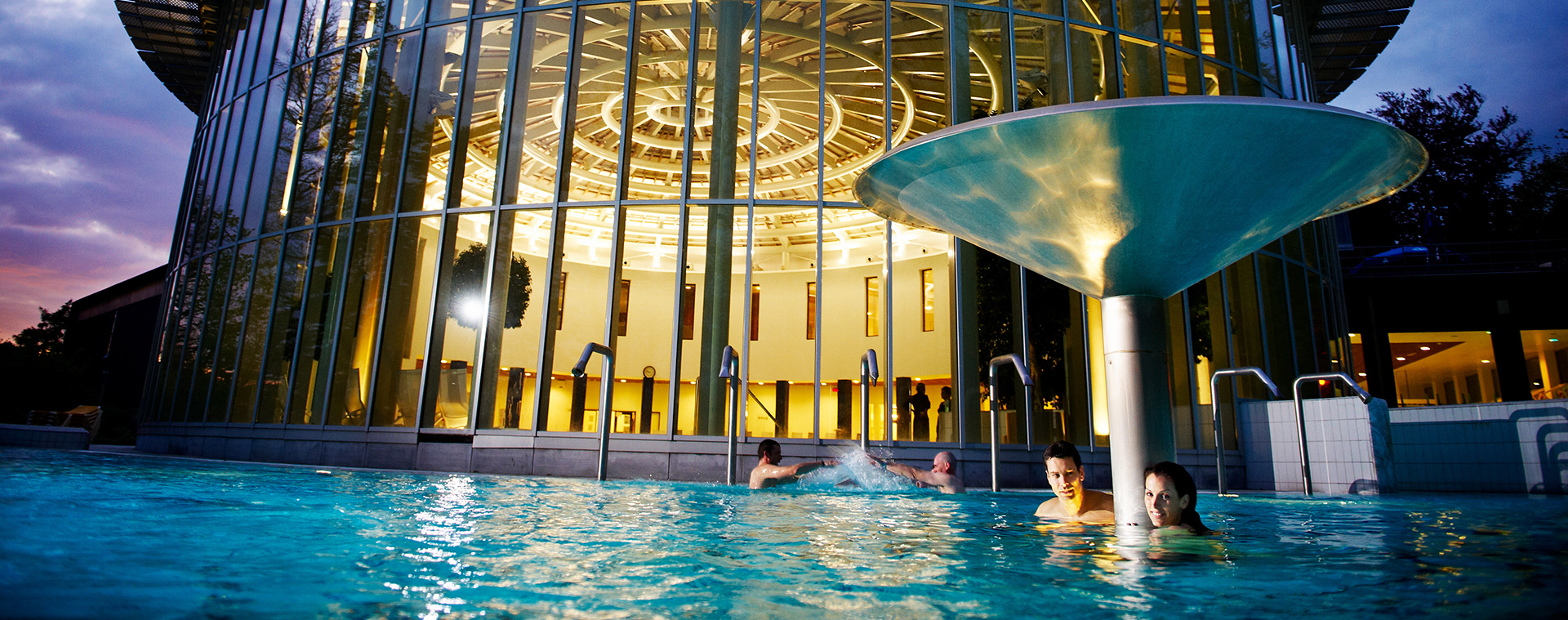Known as the “Pearl of Ardennes”, Spa nestles in a pretty forested valley, source of its world-famous bottled waters. Its healings springs, the pouhons, have been frequented since the 16th century and by the late 1700s Spa was a popular meeting place for the nobility and European bourgeoise, being known as the Café of Europe.
Today Spa is a lively town offering museums, shopping, sporting activities and plenty of cultural events, including the Francofolies festival each year, the prestigious casino and its world-famous racetrack.
Spa is one of the eleven Great Spa Towns of Europe, inscribed on the World Heritage List since 2021.

Spa Tourist Office
Historical Background
Although probably known by the Romans (Sparsa is the past tense of the Latin verb meaning “to gush forth”) Spa’s history did not really begin until 1559, with the publication of the book “Des Fontaines acides de la forest d’Ardenne”, written by Lymborth,doctor to the prince-bishop of Liège. The treaty on the properties of Spa’s springs quickly spread through European courts and prestigious visitors began to came here looking for the healing springs.
Among these visitors, is notable the stay of Czar Peter the Great in 1717, who found relief for his liver disease at Spa’s pouhons. Word of his cure did the round of the European courts and launched the fashion for treatments in Spa.
By that time, Spa mineral water was already bottled and shipped all over Europe, as far as Russia: a flourishing industry still operating nowaydays.
The Café of Europe
18th Century
By second half of the 18th century Spa was the meeting point for kings, emperors, artists and some of the most illustrious and influential people. They came for health, but also for Spa's social affairs, as the town was becoming "the center of the civilized world", the "Café of Europe", as Emperor Joseph II called it.
Its urban development followed the needs of these bobelins (local-term for visitors) and the design of the water treatments, which by that time involve 3 obligations: drinking the waters, physical activity and enjoyment and leisure. Thus,buvettes, halleries and promenades developed around the town, while a whole series of pleasant pastimes were organized to occupy this new societé: horse-races, balls, landscaped walks, gaming...
By 1699 a postal system between Spa and the outside world was established, and in 1763 the Casino was built. It still welcome visitors today and is the oldest in the world!
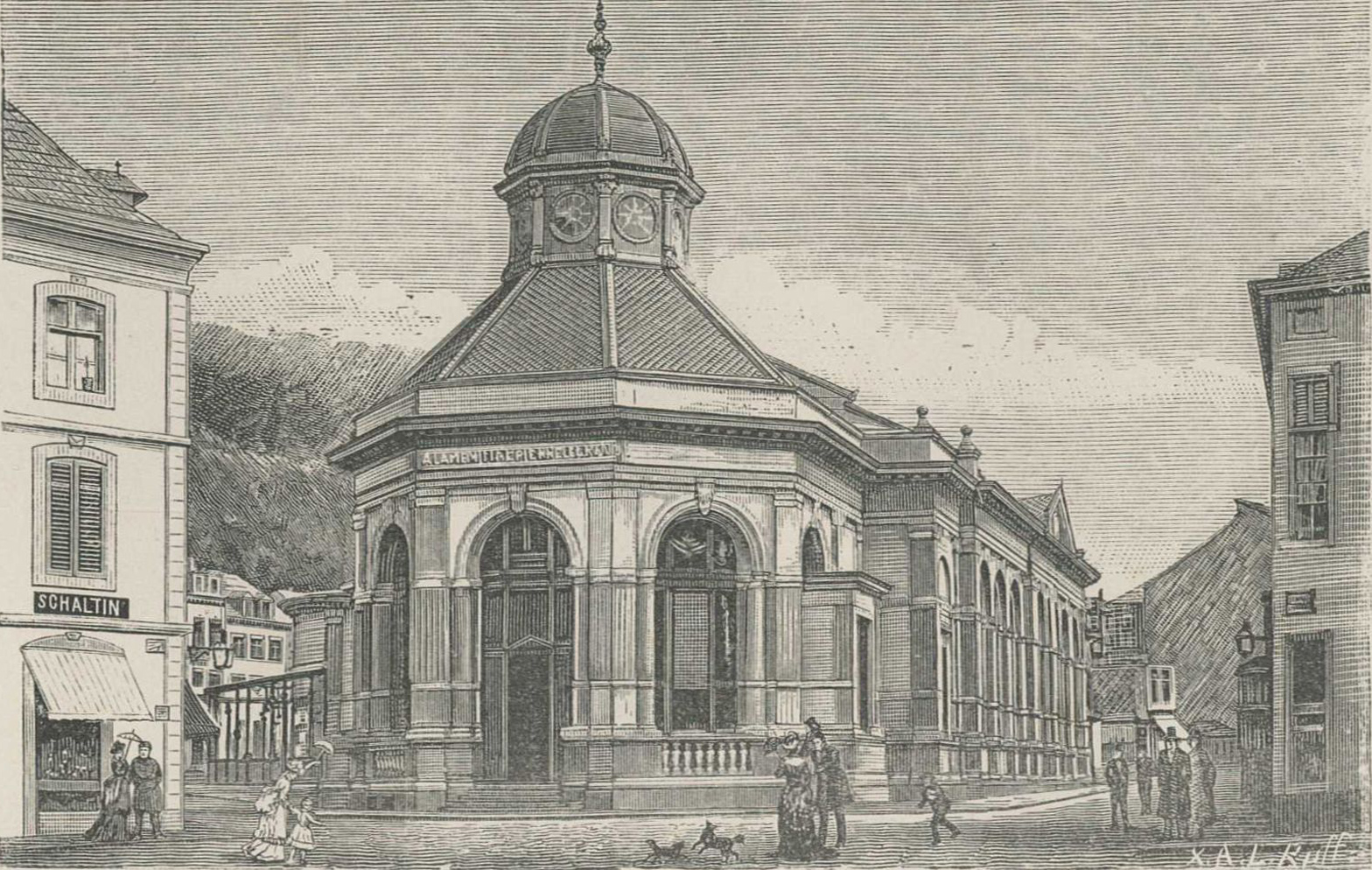

The Building of the Modern Spa Town
19th Century
In the mid-19th Century, a variety of socio-economic factors radically changed spa treatments. The aristocracy gave way to the bourgeoisie, the holiday replaced the social round and bathing treatments took over from drinking ones. Urban development followed in the wake of these changes and, in line with the German model, Spa was equipped with the amenities essential to a spa town worthy of its name: new bath establishments, arcades,hotels and villas, bandstands, etc.
The new bobelins, wool producers from Verviers, manufacturers from Liège and politicians from Brussels, took an interest in the new sports (tennis, cars, aviation, etc.) and all kinds of attractions; this was the period of the “firsts” in Spa (beauty competition, battle of flowers, etc.). The town’s prestige grew even further when Queen Marie-Henriette, wife of Leopold II, took up residence there,
Spa's second golden era will come to an end in the following years, first with the permanent abolition of gaming (1902) and then the two world wars.
In the 18th century most of the renowed names of Europe met at Spa: crowned heads, artistic celebrities, nobility, clergy and wealthy bourgeoisie. The number and reputation of visitors was so remarkable that, by 1751, a "List of Lords and Ladies" visiting the towns was published every week during the thermal.
This list, which recorded more than 1200 visitors some years, inspired artist Antoine Fontaine for his masterpiece Spa's «Livre d’Or»: a painting, nine meters long, representing up to 92 of these famous guests that, through history, came to sample the healing Spa's waters.
The painting, made in 1894, is permanently exhibited at the Winter Garden of Pouhon Pierre le Grand
The waters
Springs & Spas
Several sources and springs, known locally as the Pouhouns can be found in the town itself and the surrounding hills. Waters are not identical,and vary in composition and chracteristics: some are sparkling,some iron-rich, others slightly mineralised.
The pouhouns are always accessible to visitors, each of them useful to treat different conditions. Although Spa’s modern water therapies does not include drinking them anymore, curiosity is just a pretext as legitimate as any other, and many visitors still sample them.
Spa is also best-known for its bottled waters,exported worldwide. There are 3 different waters, named Riene, Marie-Henriette (gently carbonated), and Barisart (sparkling).
Pouhon Pierre le Grand
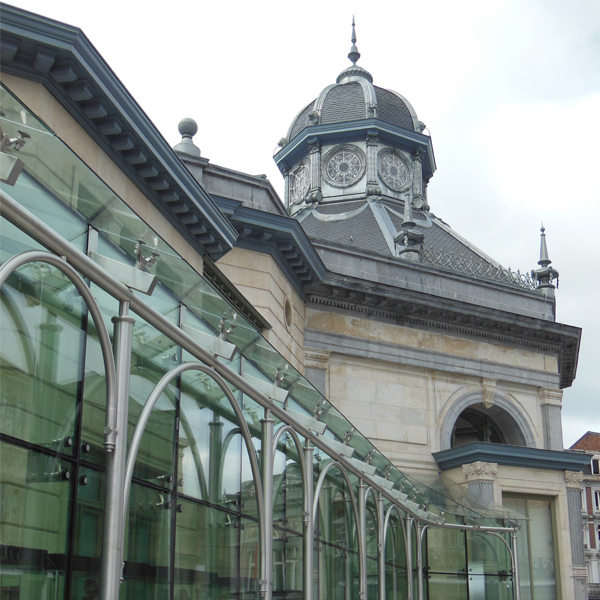
Soon famous for having healed Tsar Peter the Great, it is Spa’s most prolific spring; sparkling, rich in mineral salts and iron, flowing up to 21,000 liters per day.
The current building was first built in 1880, and house today the Tourist Office and the celebrated Spa «Livre d’Or», along with an outstanding collection of Joan Miró’s painting as well as others temporary exhibitions.
Prince de Condé
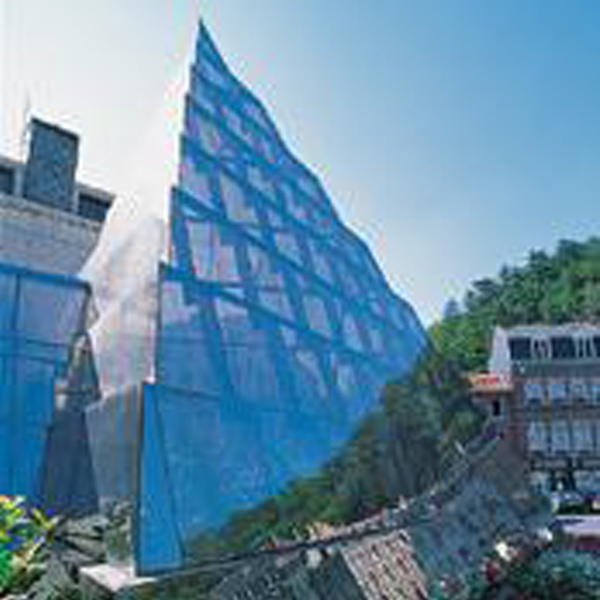
Discovered in 1863 by the pharmacist Schaltin, for many years its waters (the same as in Pierre le Grand but more mineralized) were bottled and sold.
The original building dates back to the 19th century, with a glass wall surrounding the spring. Today, a vanguardist glass pyramid adds a contemporary flair to a venue house to many art exhibitions.
The Tonnelet
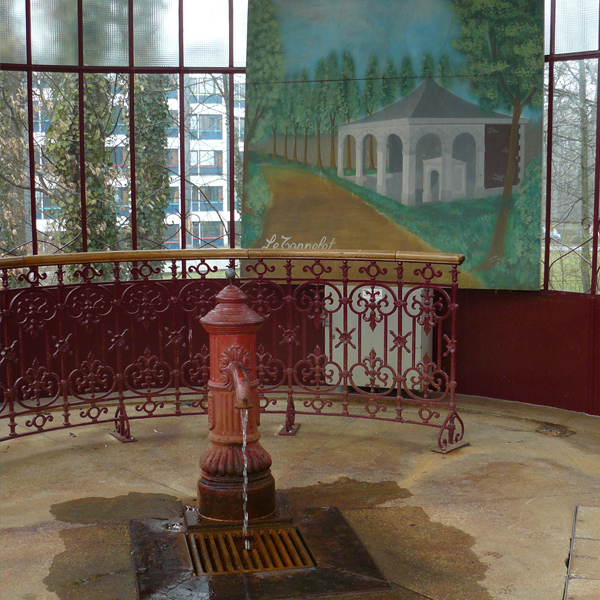
This pouhon is named after the small barrels used to collect its water years ago.
Waters are the same as in the Spa Marie-Henriette, although more ferruginous and carbonated, and were studied by several scientific authorities, like André Trevisius, doctor to the Archeduke Albert and her wife Isabelle.
Sauvenière and Groesbeeck
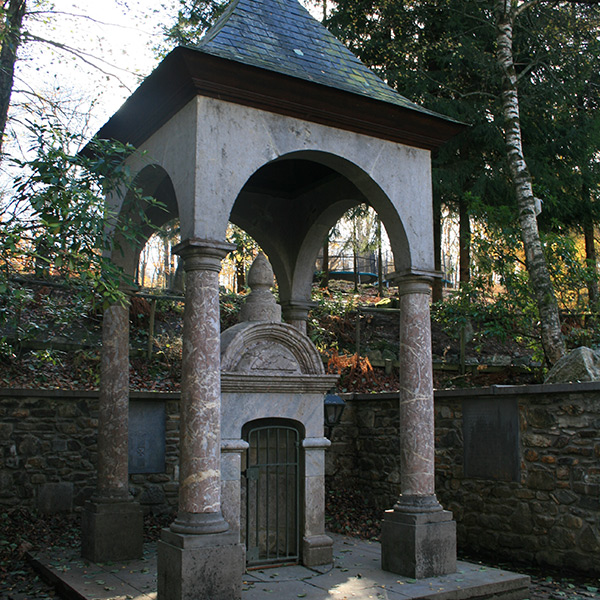
Sauvenière is the oldest of Spa’s springs. According to legends, it was discovered by Saint Remacle who left the imprint of his sandal at the edge of the fountain. Said to cure men sterility, it soon became a pilgrimage place. Here starts the famous “Promenade d’Orléans”.
The neighbour Groesbeeck spring disappeared misteriously in 1663, only to reappear later with more and clearer water. The Groesbeeck Baron rected a marble niche here in 1651, restoured in 1773.
Pouhon Géronstère
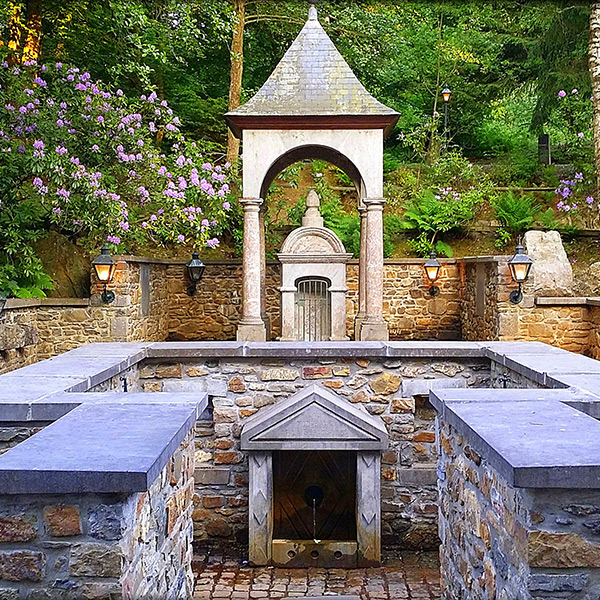
Also named Enragée (“furious”), the springs, 400 meters asl, flows ferruginous and carbonated waters. With a strong sulphurous taste, it is highly recommended for infections of the respiratory tract, and was very used by Tsar Peter the Great.
. The pavilion and the water temple that house the spring were donated to Spa by the Earl of Burgsdorff in 1651, and was restored by the Spa Tourist Officce in 1979.
Pouhon Barisart

Already known and credited in the Lymborght list in 1559, it wasn’t harnessed until 1850.
A charming walk trough a romantic 19th century grotto and along little cascades and ponds connects it to her neighbouring sister of Géronstère. A new pump gallery and restaurants weer uilt here in 1970s
The thermal baths
Proper balneotherapy treatments were not developed in Spa until the 19th century. Nevertheless, the first thermal baths were revolutionary at the time, introducing two new treatments: the effervescent baths, useful to combat heart diseases and high blood pressure, and the peat baths, indicated for rheumatism and skin diseases.
Spa old thermal baths were built between 1862 and 1868 under the supervision of architect Suys, author of the Brussels Stock Exchange building. The building, that still can be visited today, has got an impressive façade decorated with rich stone carvings and statues, work of Jacques Van Omberg and the Van Den Kerkhove brothers. The interior are decorated with paintings from Carpey.
Proper balneotherapy treatments were not developed in Spa until the 19th century. Nevertheless, the first thermal baths were revolutionary at the time, introducing two new treatments: the effervescent baths, useful to combat heart diseases and high blood pressure, and the peat baths, indicated for rheumatism and skin diseases.
Spa old thermal baths were built between 1862 and 1868 under the supervision of architect Suys, author of the Brussels Stock Exchange building. The building, that still can be visited today, has got an impressive façade decorated with rich stone carvings and statues, work of Jacques Van Omberg and the Van Den Kerkhove brothers. The interior are decorated with paintings from Carpey.
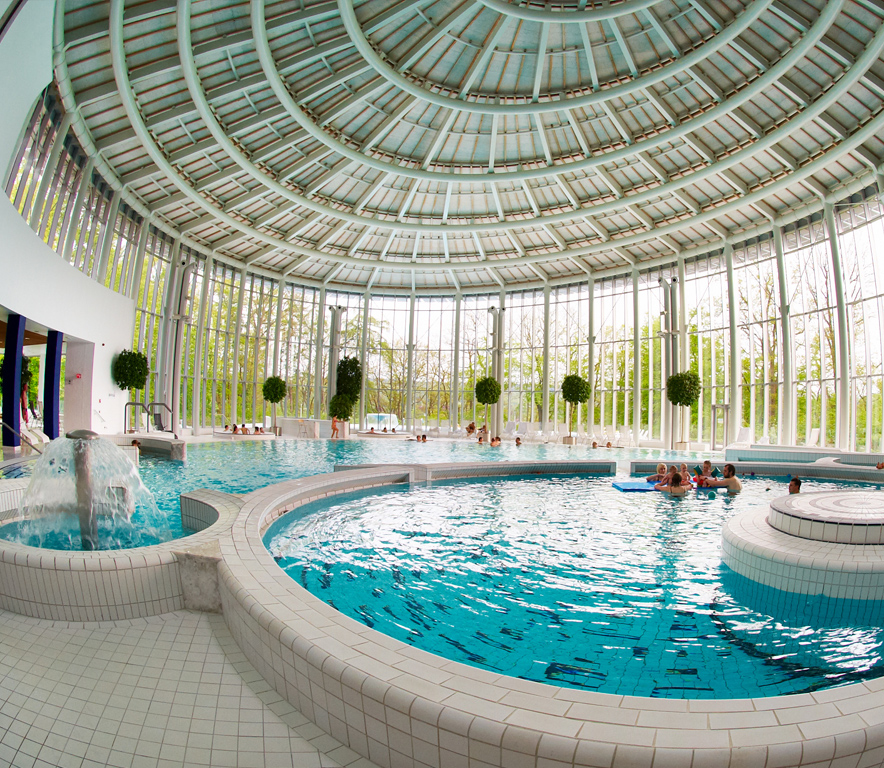
Springs
Pouhouns Pierre le Grand, Prince de Condé, Tonnelet, Sauvenière, Grosbeeck, Géronstère, Barisart, Marie-Henriette
Earliest known use
Roman
Chemical Elements
Sodium chloride, bromine, iodine, sulphur
Culture & Heritage
More than water
Spa’s rich history can be explored by visiting its rich built heritage and many museums, including one unusual one dedicated to the history of laundry. Visitor shouldn’t miss the Museum of Spaat the Villa Royale, the former residence of Queen Marie Henriette. The museum house a collection of jolités, craftsman-made wooden objects finally decorated which were very popular among bobelins at the end of the 18th century, probably the very first souvenirs in history.
Another interesting attractions is the «Eaudyssée de Spa» (Spa Water Odissey) exhibition at Spa Monopole; a magical journey which unveils the secrets of Spa natural mineral waters, their percolation and filtration including their unique protection.
A walk around the charming town shall include some sight-seeing, namely around the Parc de Sept-Heures and the Anglican Park, which remind us about the strong link between Spa and its English guests. The church of Saint Remacle and of course the Casino and the Waux-Hall, which was also a game house in the old days and have seen many uses througout the years.
The history of the thermal town is closely linked to motor sports and to the Spa-Francorchamps racetrack, whose creation dates from 1920. With an initial track of 14 km in the heart of a protected natural environment, it rapidly became the finest circuit in the world.

